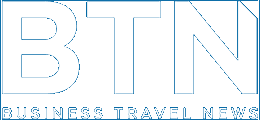The Sky's the Limit
Midsize budgets are no barrier to big travel management strategies.

Managing travel typically helps hit six corporate strategic goals, according to GoldSpring Consulting: cost management, sustainability, regulatory compliance, traveler satisfaction, duty of care and process efficiency. The challenge for mid-sized travel programs (which BTN defines as up to about $15 million air spend), says GoldSpring partner Will Tate, is that these strategic priorities are exactly the same as for larger spenders “but the capacity to manage them is less.”
The limitations are self-evident, including reduced spending leverage, lack of resource (often there is no full-time travel manager), lack of funds to invest in technology and in some cases lack of expertise. There is, for example, no in-house data analyst on hand, said Lexi Benakis, who used to benefit from such colleagues when part of the travel teams at SAP and UBS. Now as the VP of global indirect procurement at a New Jersey-based publishing concern, which spends a little north of $10 million per annum on travel, managing the program accounts for only 20 percent to 30 percent of her time.
Despite such difficulties, both Benakis and Emma De Lange, travel manager for the Geneva-based non-profit educational foundation International Baccalaureate, insist mid-market travel programs can be high-achieving and innovative. Size, they insist, is no barrier to negotiating discounts with suppliers, nor to adopting technology early. Midsize managers even benefit from advantages larger buyers lack, including nimbleness and better proximity to the rest of their organization.
Strategic Dividends
De Lange, who oversees a similar spend to Benakis, and likewise previously managed travel for multinational behemoths, is a perfect example of this last point. “The office I sit in at IB is strategy,” she said. “It’s been a wonderful change to focus on that. One of the things I really appreciate is relationships. I am frequently meeting with heads of department and all other levels in the organization and I get to understand our business and its strategy quite well.
“It helps me plan ahead by knowing where we are going for the next five to seven years. If I know we are going to be working more with emerging markets, I can source a supplier we will need or speak to our current suppliers and say, ‘We are going to travel a lot more in India and China—how are you going to support us?’” said De Lange.
Not only does being smaller help take the long-term view, it also helps react faster to short-term changes. “You have the ability to pivot quickly, whether that is introducing cool, cutting-edge technology or failing faster,” said Benakis. “That’s a really awesome advantage to having a midsized program.”

Partnership Drives Progress
Naturally, there are constraints to innovation. “There’s just not enough value proposition to build your own NDC [New Distribution System] connection,” said Tate. “Generally midsize companies are going to rely on TMCs to provide their technology because they don’t have the budget to make anything else happen.”
However, while self-built technology is vanishingly rare for the midsize sector (and hardly less so among larger travel programs), it is certainly possible to customize, and to source beyond the TMC, as both De Lange and Benakis have done.
At IB, De Lange has introduced the meeting planning platform Troop, whose services include identifying the location that will involve the lowest aggregate mileage for everyone attending. “Because we are a small organization, I am able to have that conversation with senior people in the business unit to say: ‘Did you know that if we looked at the best place to meet, not only would we reduce our emissions and save money but also it’s actually a better travel experience because people are traveling far less?’” said De Lange. “I feel like I have a voice in the business.” At a stroke, she has hit certainly three, arguably five, of the strategic goals articulated by GoldSpring.
“One of the biggest parts of my role is constantly being on it and looking for improvements: making sure we’re not overspending or that a new market hasn’t popped up suddenly. You need to look at the data.”
– International Baccalaureate’s Emma De Lange
De Lange has also customized IB’s payments process. Around 85 percent of the organization’s travel is by non-employees, such as trainers, and therefore corporate cards are inappropriate. Instead, IB is a heavy user of virtual cards at hotel check-out. “It’s working well in most markets but we’re facing adoption issues in countries including Japan, China and Indonesia,” she said.
Following consultation with travel management company BCD Travel and virtual payment provider Conferma, a solution was devised: using pre-paid rates which are settled via Conferma in advance of the stay. “We engage well together and that’s when we’re able to make a better traveler experience because the program is smaller,” De Lange said.
It is an important advantage that she feels service providers do not always recognize. “Because we keep the same suppliers for many years, they are prepared to keep working differently with us,” she said.

Precision Is Paramount for Midsize Multi-taskers
Benakis is similarly unafraid to innovate. In a previous role at another midsize company, she introduced a rate re-shopping tool, although she quickly learned by doing so that the rates her TMC were providing were already good, so she dropped the technology—an example of failing fast. She also introduced dining apps such as Dinovo to obtain perks and cashback for meal spend, and is about to introduce a similar app at her latest company. “We just did a meal expense assessment, and we’re also using the data to adjust our per diem allowances,” she said.
“You have the ability to pivot quickly, whether that is introducing cool, cutting-edge technology or failing faster. That’s a really awesome advantage to having a midsized program.”
–Lexi Benakis
Benakis experiments with supplier relations as well. She has struck a deal with Uber and is starting what she terms a “soft trial” to persuade employees to use the ride app provider in preference not only to taxis but also to short-term, short-distance car rental, such as airport-to-hotel transfers.
Again, she is willing to fail fast. “It’s a roll of the dice whether travelers will stick to it,” she said. “We’re going to give it a couple of months to see if it’s working.” However, Benakis is confident, because her initiative is data driven. It was through spend analysis that she was able to break down the reasons employees rent cars into three categories and concluded one of those, short-distance rental, could be converted to Uber usage.
Benakis is adamant that midsize program managers can identify improvements through their own data analysis, but they need to do so judiciously. “You don’t have the time or volume to cast a wide net, so you have to be very precise about what you’re looking to do,” she said.
Leverage Your Real Value
Being discriminating also means, contrary to popular belief, that it is possible to secure good discounts. “The key with the midmarket is that you need to be much more targeted in how you negotiate and go out to that request for proposal,” said Benakis. “Look at the hubs your travelers are in and out of because it’s guaranteed they are not in every single metropolitan area. If you’re not traveling out of Dallas, then why negotiate Dallas? You can negotiate just the high traffic lanes or those top ten or 15 markets where you do have the volume.” The same principle, she added, applies to negotiating meetings rates.
Midsize buyers may naturally worry their spend is insufficient to interest suppliers in awarding discounts. Benakis believes such fears are misplaced. “We received a 98 percent response rate to our last RFP,” she said.
Mike Cameron, CEO of Salt Lake City-based TMC Christopherson Business Travel, concurs, observing that airlines, hotels and other suppliers are well aware it was small and midsize companies that resumed travel post-Covid much quicker than large corporations.
“If you’re concentrated on a smaller number of large clients, and they cut their travel budgets or change suppliers, it’s a lot more risky than if you’ve got it spread over a lot of medium-sized companies.”
– Christopherson Travel’s Mike Cameron
Midsize clients can also tap into lower prices negotiated by their TMC, said Cameron, “but ultimately the better negotiated rates come from clients negotiating directly with vendors. And because of the SME market being so important now, vendors are paying attention to that. They are willing to talk to them and give discounts. Maybe not as much as the big guys but we see vendors willing to negotiate with the upper end of the midsize market.
“For one thing it spreads the risk. If you’re concentrated on a smaller number of large clients, and they cut their travel budgets or change suppliers, it’s a lot more risky than if you’ve got it spread over a lot of medium-sized companies,” Cameron said.
It appears, therefore, that if someone in a midsize company is empowered to manage the travel program actively, they will achieve results—so long as they take the initiative. “One of the biggest parts of my role is constantly being on it and looking for improvements: making sure we’re not overspending or that a new market hasn’t popped up suddenly. You need to look at the data,” said De Lange.
“Don’t think you have to leave the process alone until the next RFP,” she continued. “It’s a constant review process with our meeting bookers and our TMC, and talking about what works and what doesn’t, because you will start to see patterns and make those changes quite quickly.”
